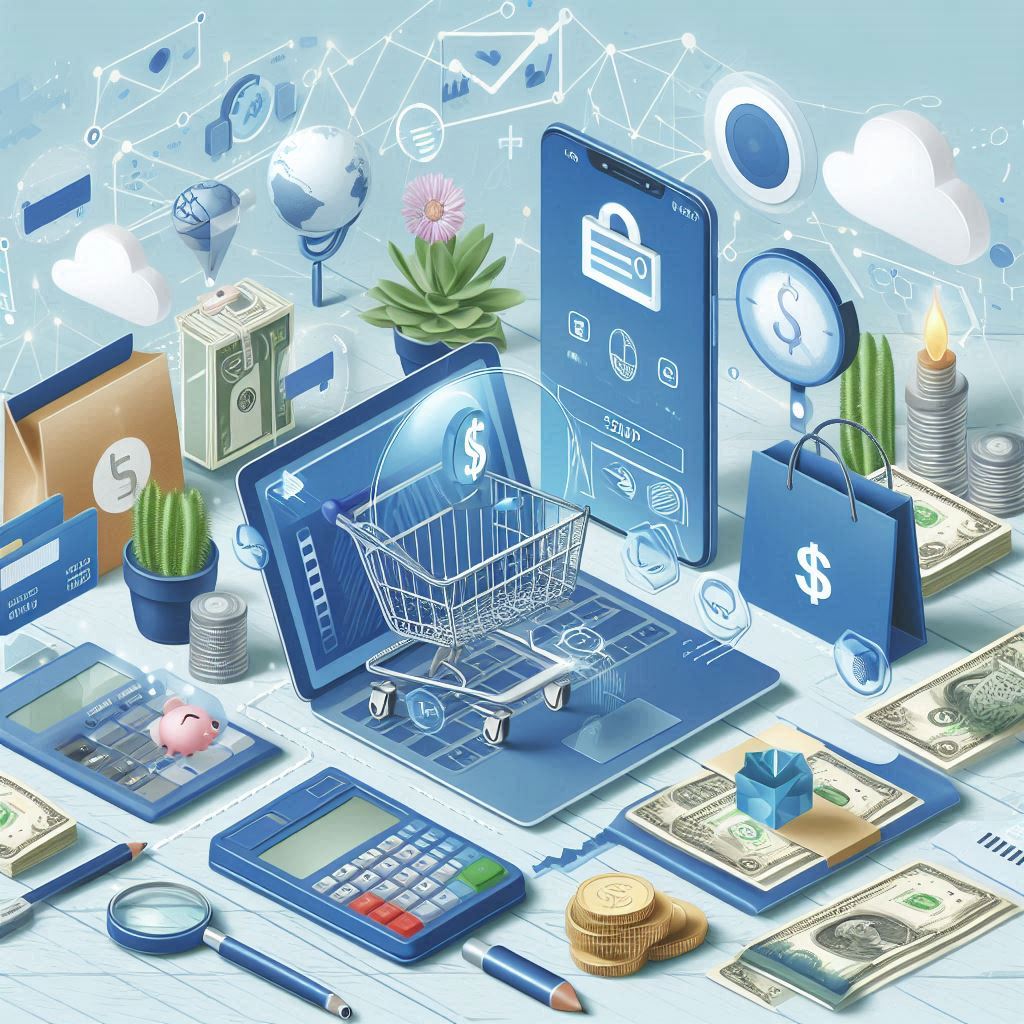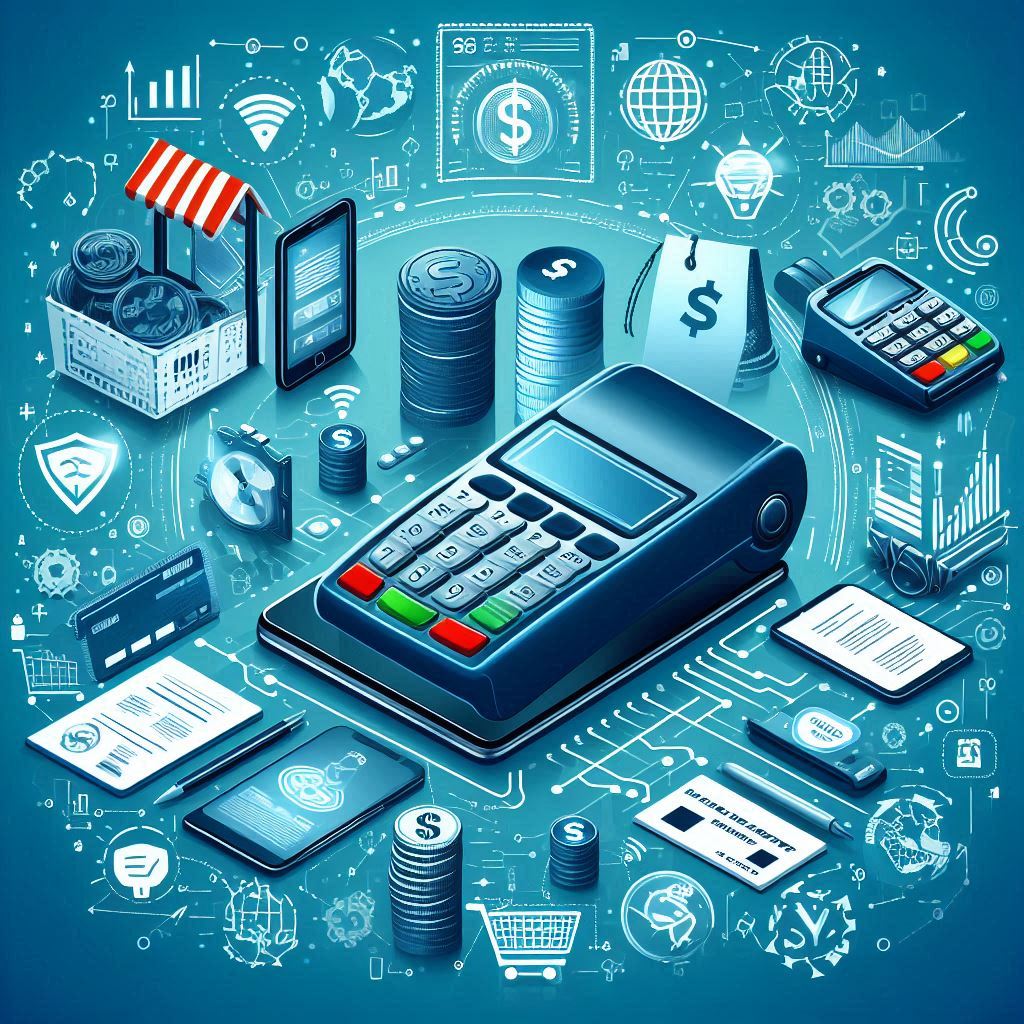Introduction
Online payments have revolutionized the way we handle transactions. From the days of bartering to the modern era of digital wallets and cryptocurrencies, the evolution of payment systems has been nothing short of remarkable. Staying updated with the latest trends and innovations in online payments is crucial for businesses and consumers alike to ensure security, efficiency, and convenience.
As we delve deeper into the digital age, online payments continue to evolve, driven by technological advancements and changing consumer preferences. The rapid pace of innovation in this field means that what was cutting-edge yesterday can quickly become obsolete. Therefore, understanding the current trends and anticipating future developments is essential for anyone involved in the financial ecosystem.

Historical Background
The journey of online payments began with the advent of the internet. Early milestones included the introduction of PayPal in 1998, which became a game-changer by allowing users to send and receive money electronically. This paved the way for a plethora of online payment options that have since evolved.
In the early days, online payments were primarily facilitated through credit cards, which provided a secure and straightforward method for e-commerce transactions. However, the landscape quickly expanded with the introduction of digital wallets and payment gateways. Innovations like PayPal, which offered a secure and user-friendly platform for online transactions, set the stage for future developments.
Over the years, we witnessed significant milestones such as the launch of Apple Pay and Google Wallet, which brought mobile payments to the forefront. These platforms leveraged the widespread adoption of smartphones, making it easier for consumers to make purchases with just a tap or a scan. The integration of biometrics, such as fingerprint and facial recognition, further enhanced the security and convenience of these payment methods.
Current State of Online Payments
Today, we see a diverse range of payment methods dominating the market. Credit and debit cards remain popular, but mobile wallets like Apple Pay, Google Wallet, and digital payment systems such as PayPal and Venmo are rapidly gaining ground. According to recent statistics, global online payment transactions are expected to reach $8.94 trillion by 2025, highlighting the significance of this sector.
The current landscape is characterized by a blend of traditional and innovative payment methods. Credit and debit cards continue to hold a significant share, especially for larger transactions. However, the rise of mobile wallets and peer-to-peer payment systems has introduced more flexibility and convenience for smaller, everyday purchases.
Contactless payments have also seen a surge in popularity, particularly in the wake of the COVID-19 pandemic. Consumers have increasingly turned to touch-free payment methods to reduce physical contact, accelerating the adoption of technologies like NFC (Near Field Communication) and QR codes. These advancements have made it possible for consumers to complete transactions with a simple tap or scan, enhancing both speed and convenience.
Emerging Technologies in Online Payments
Blockchain and Cryptocurrencies
Blockchain technology and cryptocurrencies are arguably the most transformative innovations in the payment industry. Cryptocurrencies like Bitcoin and Ethereum offer decentralized, secure, and fast transactions. Blockchain, the underlying technology, ensures transparency and reduces fraud risks, making it a promising solution for future payment systems.
Cryptocurrencies have introduced a new paradigm in the world of online payments. Unlike traditional currencies, cryptocurrencies operate on decentralized networks, removing the need for intermediaries like banks. This decentralization not only reduces transaction costs but also increases the speed of transactions, especially for cross-border payments.
Moreover, blockchain technology, which underpins cryptocurrencies, offers unparalleled security. Each transaction is recorded on a distributed ledger, making it virtually tamper-proof. This level of transparency and security is particularly appealing in an age where data breaches and fraud are major concerns.
However, the widespread adoption of cryptocurrencies in everyday transactions faces several challenges. Regulatory uncertainties, price volatility, and limited acceptance among merchants are significant hurdles. Nevertheless, ongoing developments in regulatory frameworks and the growing acceptance of cryptocurrencies by major companies suggest that these digital assets could play a more prominent role in the future of online payments.
Artificial Intelligence and Machine Learning
AI and ML are making waves in the payment industry by enhancing security and personalizing user experiences. These technologies help in detecting fraudulent activities by analyzing transaction patterns and predicting potential threats. Additionally, AI-driven chatbots are improving customer service by offering instant support.
Artificial intelligence has become an invaluable tool in combating fraud in online payments. Machine learning algorithms can analyze vast amounts of transaction data in real-time, identifying patterns and anomalies that may indicate fraudulent activity. This proactive approach allows for the early detection and prevention of fraud, protecting both consumers and businesses.
In addition to enhancing security, AI is also transforming the user experience. Personalized payment experiences are becoming more common as AI systems analyze user behavior and preferences. For instance, AI can recommend the best payment method based on past usage patterns, or provide tailored offers and discounts, enhancing customer satisfaction and loyalty.
Moreover, AI-driven chatbots are revolutionizing customer service in the payment industry. These chatbots can handle a wide range of queries, from troubleshooting payment issues to providing information about account balances. By offering instant support, chatbots improve the overall customer experience and reduce the burden on human customer service representatives.
Mobile Payment Innovations
Mobile Wallets
Mobile wallets are reshaping the payment landscape by providing a convenient and secure way to make transactions. Services like Apple Pay, Google Pay, and Samsung Pay store card information securely and enable quick payments with just a tap.
Mobile wallets have become an integral part of the modern payment ecosystem. These digital wallets store payment information on a mobile device, allowing users to make payments quickly and securely. The convenience of mobile wallets is particularly evident in everyday transactions, such as paying for groceries or public transportation.
One of the key advantages of mobile wallets is their integration with biometric authentication methods, such as fingerprint scanning and facial recognition. These features add an extra layer of security, ensuring that only the authorized user can access the wallet and make payments.
Furthermore, mobile wallets are not limited to storing credit and debit card information. Many mobile wallets support the storage of loyalty cards, gift cards, and even tickets, making them a versatile tool for managing various aspects of a consumer’s digital life.
Contactless Payments
Contactless payments have surged in popularity, especially during the COVID-19 pandemic. Near Field Communication (NFC) technology allows users to make payments by simply waving their phones or cards over a payment terminal, offering speed and convenience.
The rise of contactless payments has been driven by the need for fast, secure, and hygienic transaction methods. NFC technology enables contactless payments, allowing consumers to complete transactions by simply tapping their card or mobile device on a payment terminal. This method is not only quicker than traditional card payments but also reduces physical contact, making it a preferred choice during the pandemic.
Contactless payments are widely accepted by merchants around the world, from retail stores to public transportation systems. The ease of use and widespread acceptance have contributed to the rapid adoption of this payment method. Moreover, contactless payments are often backed by robust security features, such as encryption and tokenization, ensuring the safety of transactions.
Security Enhancements
Biometric Authentication
Biometric authentication, such as fingerprint scanning and facial recognition, is becoming the norm for securing online payments. These methods offer a higher level of security compared to traditional passwords and PINs, reducing the risk of unauthorized access.
Biometric authentication leverages unique physical characteristics, such as fingerprints or facial features, to verify a user’s identity. This method offers several advantages over traditional authentication methods. Firstly, biometric data is difficult to replicate, making it a more secure option. Secondly, biometric authentication is convenient for users, as it eliminates the need to remember passwords or carry physical tokens.
The adoption of biometric authentication has been accelerated by the widespread use of smartphones equipped with fingerprint scanners and facial recognition technology. These devices have made it easier for consumers to use biometric authentication for various purposes, including online payments. As a result, biometric authentication is becoming a standard feature in modern payment systems.
Tokenization and Encryption
Tokenization replaces sensitive card information with a unique identifier, or token, which is useless if breached. Combined with encryption, which scrambles data during transmission, these technologies provide robust security for online transactions.
Tokenization and encryption are critical technologies in securing online payments. Tokenization involves replacing sensitive payment information, such as card numbers, with unique tokens. These tokens are meaningless if intercepted, reducing the risk of data breaches. When a transaction is processed, the token is mapped back to the original payment information in a secure environment.
Encryption, on the other hand, ensures that data is securely transmitted between the user’s device and the payment processor. By scrambling the data, encryption prevents unauthorized parties from accessing the information during transmission. Together, tokenization and encryption provide a multi-layered approach to securing online payments, protecting both consumers and merchants from potential threats.
The Role of Fintech in Payment Innovations
Fintech startups are at the forefront of payment innovations, driving change with cutting-edge technologies and user-centric solutions. Their collaboration with traditional banks has led to the development of hybrid models that leverage the strengths of both sectors, enhancing the overall payment experience.
Fintech companies have disrupted the traditional financial landscape by introducing innovative payment solutions. These startups leverage advanced technologies, such as blockchain, AI, and mobile platforms, to create user-friendly and secure payment systems. Their agility and willingness to experiment with new ideas have led to the development of products and services that cater to the evolving needs of consumers.
The collaboration between fintech startups and traditional banks has resulted in a synergy that benefits both parties. Banks provide the regulatory compliance and established customer base, while fintech companies bring technological expertise and innovation. This partnership has led to the creation of hybrid models that offer the best of both worlds, enhancing the payment experience for consumers.
The Impact of Regulation
Regulatory frameworks play a critical role in shaping the online payment landscape. Regulations like the General Data Protection Regulation (GDPR) in Europe and the Payment Services Directive (PSD2) aim to protect consumer data and promote competition. Governments and international bodies continue to work towards creating a balanced regulatory environment that fosters innovation while ensuring security.
Regulations in the online payment industry are designed to protect consumers and ensure the integrity of financial systems. The GDPR, for instance, focuses on data protection and privacy, requiring companies to handle consumer data responsibly. PSD2, on the other hand, promotes competition and innovation by allowing third-party providers to access payment services.
These regulations have a significant impact on the payment industry, influencing how companies operate and innovate. While regulations can sometimes pose challenges, they also create opportunities for businesses to develop compliant and secure solutions. By fostering a balanced regulatory environment, governments can encourage innovation while ensuring the safety and privacy of consumers.
Consumer Behavior Trends
Consumer preferences are rapidly evolving, influenced by convenience, security, and the rise of digital-native generations. Millennials and Gen Z, in particular, prefer mobile and contactless payments, driving the demand for innovative payment solutions.
The payment preferences of consumers are shaped by several factors, including convenience, security, and technological advancements. Millennials and Gen Z, who have grown up in the digital age, are particularly inclined towards mobile and contactless payments. These generations value convenience and speed, preferring payment methods that integrate seamlessly with their digital lifestyles.

In addition to younger generations, the overall shift towards digital payments has been accelerated by the COVID-19 pandemic. Consumers across all age groups have increasingly adopted contactless and online payment methods to minimize physical contact and enhance safety. This trend is likely to continue, with digital payments becoming the norm rather than the exception.
Global Perspectives
Different regions exhibit varying trends in online payments. For instance, China leads the way with widespread adoption of mobile payments through platforms like Alipay and WeChat Pay. In contrast, regions like Africa are seeing a surge in mobile money services such as M-Pesa, which cater to the unbanked population.
The adoption of online payment methods varies significantly across different regions. In China, mobile payment platforms like Alipay and WeChat Pay dominate the market, with millions of users relying on these services for daily transactions. The integration of these platforms with social media and e-commerce has made mobile payments an integral part of the Chinese digital economy.
In contrast, Africa has seen the rise of mobile money services like M-Pesa, which provide financial services to the unbanked population. These services allow users to store money, make payments, and transfer funds using their mobile phones, addressing the lack of traditional banking infrastructure in many parts of the continent.
Other regions, such as Europe and North America, exhibit diverse payment preferences, with a mix of credit cards, mobile wallets, and contactless payments. The regulatory environment, technological infrastructure, and cultural factors all play a role in shaping the payment landscape in these regions.
The Future of Cryptocurrencies in Payments
Cryptocurrencies are poised to become mainstream, with more businesses accepting them as payment. However, regulatory challenges remain a significant hurdle. Governments are working towards creating frameworks that can accommodate the unique characteristics of cryptocurrencies while protecting consumers.
The future of cryptocurrencies in payments is promising but fraught with challenges. As more businesses begin to accept cryptocurrencies, the potential for these digital assets to become a mainstream payment method increases. Cryptocurrencies offer several advantages, including lower transaction costs, faster cross-border payments, and increased security.
However, regulatory challenges pose a significant hurdle to the widespread adoption of cryptocurrencies. Governments around the world are grappling with how to regulate these digital assets, balancing the need for consumer protection with the desire to foster innovation. Clear and consistent regulatory frameworks are essential for the future growth of cryptocurrencies in the payment industry.
The Role of Artificial Intelligence
AI’s role in online payments extends beyond security. It enhances user experiences by providing personalized recommendations and optimizing payment processes. AI-powered analytics also help businesses understand consumer behavior, enabling them to offer tailored services.
Artificial intelligence is transforming the online payment industry in multiple ways. Beyond fraud detection, AI enhances the overall user experience by providing personalized payment solutions. For example, AI can recommend the most suitable payment method based on a user’s transaction history, or suggest relevant offers and discounts.
AI-powered analytics provide valuable insights into consumer behavior, helping businesses tailor their services to meet the needs of their customers. By analyzing transaction data, AI can identify trends and patterns, enabling businesses to make informed decisions and optimize their payment processes.
Furthermore, AI-driven chatbots are becoming increasingly common in the payment industry, providing instant support and improving customer satisfaction. These chatbots can handle a wide range of queries, from payment issues to account management, offering a seamless and efficient customer service experience.
The Impact of COVID-19 on Online Payments
The COVID-19 pandemic has accelerated the adoption of online payments, as consumers and businesses alike sought contactless options to reduce physical interactions. This shift is likely to have long-lasting effects, with a permanent increase in the use of digital payment methods.
The COVID-19 pandemic has had a profound impact on the payment industry, accelerating the shift towards online and contactless payments. As lockdowns and social distancing measures were implemented worldwide, consumers turned to digital payment methods to reduce physical contact and enhance safety.
The pandemic has highlighted the importance of flexible and secure payment options, leading to increased adoption of mobile wallets, contactless payments, and online banking. Businesses have also adapted to the changing landscape by implementing digital payment solutions and enhancing their e-commerce platforms.
The long-term effects of the pandemic are likely to result in a permanent increase in the use of digital payment methods. Consumers have become accustomed to the convenience and safety of online payments, and businesses will continue to invest in digital infrastructure to meet the evolving demands of their customers.
Future Predictions
Experts predict a continued rise in mobile and contactless payments, driven by technological advancements and changing consumer behaviors. Additionally, innovations like quantum computing could further revolutionize the payment industry, offering unprecedented levels of security and efficiency.
The future of online payments is expected to be shaped by several key trends and innovations. Mobile and contactless payments will continue to grow in popularity, driven by the convenience and security they offer. Technological advancements, such as 5G and IoT, will further enhance the capabilities of mobile payment systems, providing faster and more seamless transactions.
Quantum computing, with its potential to solve complex problems at unprecedented speeds, could revolutionize the payment industry. Quantum encryption, in particular, offers the promise of unparalleled security, making it virtually impossible for hackers to breach payment systems. As quantum technology matures, it could become a critical component of future payment infrastructure.
Experts also anticipate the continued integration of AI and blockchain technology in the payment industry. These technologies will enhance security, improve user experiences, and enable new payment models. The collaboration between fintech companies and traditional financial institutions will drive innovation, creating a dynamic and evolving payment landscape.

Conclusion
The future of online payments is bright and full of potential. By staying informed about the latest trends and innovations, businesses and consumers can navigate this rapidly evolving landscape with confidence. Embracing these changes will not only enhance security and convenience but also unlock new opportunities in the digital economy.
As we look ahead, it is clear that the payment industry will continue to evolve, driven by technological advancements and changing consumer preferences. Staying ahead of these trends will be crucial for businesses looking to thrive in the digital age. By embracing innovation and investing in secure and user-friendly payment solutions, businesses can meet the needs of their customers and stay competitive in the ever-changing financial landscape.
FAQs
- What is the most significant innovation in online payments?
- The most significant innovation is arguably the adoption of blockchain technology and cryptocurrencies, which offer secure, transparent, and fast transactions.
- How are cryptocurrencies changing the online payment landscape?
- Cryptocurrencies are introducing decentralized payment methods, reducing reliance on traditional banking systems, and providing new opportunities for global transactions.
- What role does AI play in online payments?
- AI enhances security through fraud detection, personalizes user experiences, and optimizes payment processes, making transactions smoother and safer.
- How has COVID-19 influenced online payment methods?
- The pandemic has accelerated the adoption of contactless and mobile payments as consumers and businesses sought safer, non-physical transaction methods.
- What should businesses do to stay ahead in the online payment space?
- Businesses should stay updated with the latest technologies, invest in robust security measures, and adapt to changing consumer preferences to remain competitive.

